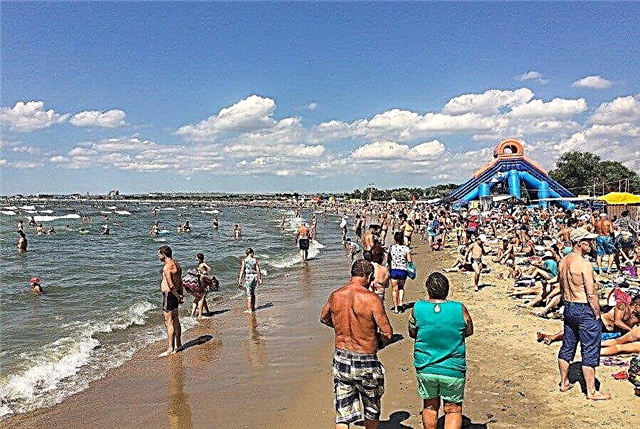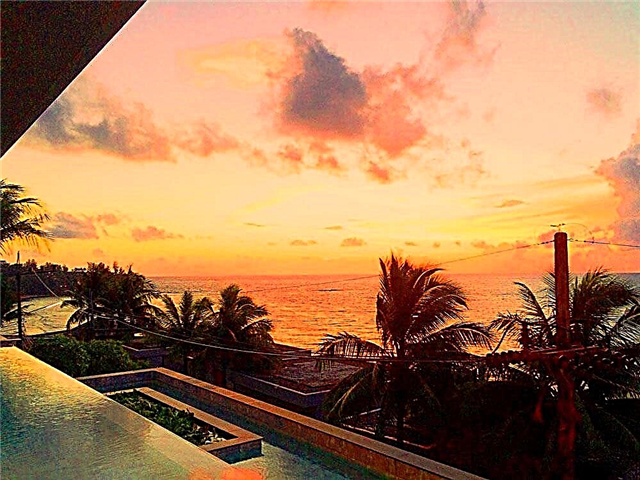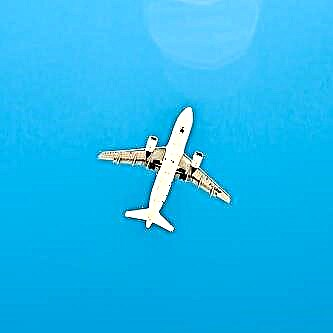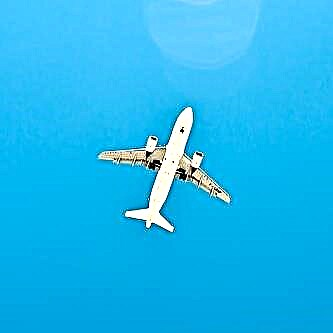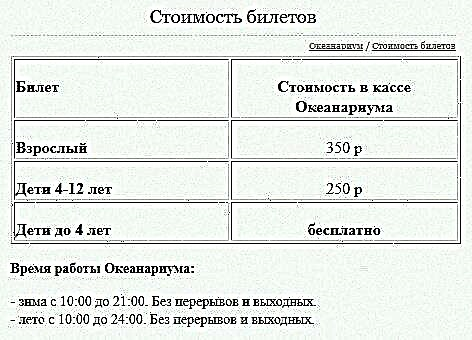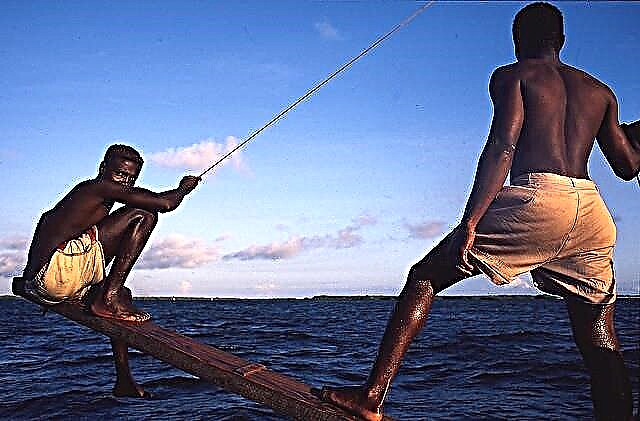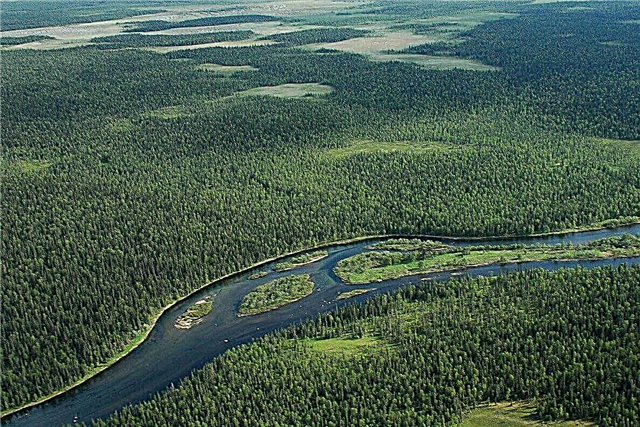Komi is a land of possibilities for those who like to discover new corners and lay their own routes. One of the republics of Russia is rich in natural sights and national flavor. The remoteness from the capital and many peoples, one way or another connected with the region, added zest and contributed to the development of the tourism industry.
Natural beauties here side by side with classic local history and art museums, iconic monuments, architectural and religious sites. Interesting places are not concentrated in one point: in order to appreciate all the charms of Komi, you can and should travel to settlements, as well as go out of town. It is impossible to leave here without vivid impressions.
The most interesting and beautiful places in Komi
List, photos with names and descriptions of popular attractions!
Weathering pillars on the Manpupuner plateau
Location - Man-Pupu-ner mountain. There are several more names, including - Mansi dummies. This geological monument consists of seven bizarre stone elevations each over thirty meters high. It seems that now they will collapse, but the sights are millions of years old, so there is no need to worry about safety. Part of the culture of the Mansi people.

Yugyd Va National Park
Founded in 1994. Located in the southeast of Komi. The name translates as "light water". It has borders with other natural tourist places of the republic. The park is engaged in educational work among the population on the issues of ecology and nature-friendly tourism. The employees are engaged in the preservation of rare species and the cleanliness of the environment, as well as the restoration of populations.

Finno-Ugric Ethnocultural Park
Founded in 2010, fully operational in 2012. Located in the village of Yb. Dedicated to the peoples who have ever inhabited the territory of Komi. There are more than fifteen different specialized buildings on the territory. There are venues for events. By visiting the complex, you can learn the legends of the region, learn new things at master classes, and plunge into the colorful atmosphere.

Pechora-Ilych biosphere reserve
Founded in 1930. Located on the western slope of the Ural Mountains. Covers an area of more than seven hundred thousand hectares. On the territory of the reserve there are several unique natural attractions: outliers, "Mansi blockheads", virgin forests. The terrain is changeable, which affects, among other things, the diversity of flora and fauna.

Loose farm of the Pechora-Ilychsky nature reserve
It was founded, like the reserve, in 1930. It is the first place in the world to breed domesticated moose. Since its opening, the farm has been engaged in scientific work. The idea was picked up from rock paintings, where large and hardy moose were used for riding and transporting goods. This was especially true before the advent of specialized winter transport. But even now, research and work continues.

Mountain People
The highest point of the Urals is located here - 1895 meters above sea level. Located on the border of the Khanty-Mansi Autonomous Okrug and Komi. It was mapped in the 19th century, and the first ascent took place in 1929. There is variability in pronunciation: the emphasis is on either the first or the second syllable. The relief does not differ from the neighboring mountains, there are glaciers and snowfields, and lakes can be found in the quads.

Mount Manaraga
Located in the Subpolar Urals. 1662 meters - absolute height. At the very peak there are sharp-angled peaks with steep slopes. The name translates as "like a bear's paw." There are points of the mountain that beginners can climb without even using special equipment. Other peaks are only conquered by professionals with impressive climbing experience.

St. Stephen's Cathedral in Syktyvkar
Start of construction - 1996. He began to work in 2001. Made in the Russian architectural style. It appeared not far from the place where the temple of the era of Nicholas I stood. Already under Soviet rule, it was first closed, and then completely dismantled. The new religious site has the status of a cathedral. Inside there is an Orthodox relic - the relics of St. Stephen of Perm.

Buredan waterfall
Located on the Kare River. The height is about ten meters. The shores around are like lunar craters due to the depressions left by the stones. When forming a walking route, it is better to choose the right bank: there the rapids and cascades have smoother transitions. If tourists choose to descend along the river, then only the section of the exit from the canyon is difficult. For such a trip, a great experience of rafting is not required.

House-Museum of I.P. Morozov
It is part of the Komi National Museum. Dedicated to the life and work of the head of the republic, who was in power from the 50s to the 80s. Thanks to him, the region received a new round of development. The museum is a copy of Morozov's parental home. Inside, the interior has been recreated, memorabilia are collected. The excursion takes place in three halls; there is also an opportunity, under the supervision of a master, to draw your own coat of arms.

Fire tower of Syktyvkar
An architectural monument, the construction of which took several years and was completed in 1907. In 1975, reconstruction was carried out, which somewhat changed the appearance of the tower. Ten years later, the chimes on the facade were brought into working order. Currently it is the administrative building of the Ministry of Emergency Situations. On the third floor there is a fire-fighting museum. Object of the cultural heritage of the peoples of Russia.

Kazhimsky ironworks
Commissioned in 1757. Stands on the Kazhym River. At the same time it is an architectural monument and glorifies the industry of the region. The first roof for the Winter Palace was made here. Conserved, and then abandoned, since 1928. The reason was the high cost of ore mining and production. Not all buildings have survived: an earthen dam, an octagonal tower, a foundry and some others.

Ybskiy Serafimovskiy Convent
Construction began in 1996. And its story began ten years earlier, when a certain Seraphima, according to legend, had a dream about the village of Yb and a holy spring that would heal her. The prophecy came true, and subsequently Seraphima became the abbess, and her son was assigned to serve in the local temple. There is a museum on the territory of the monastery, the nuns receive pilgrims. Relics are weeping and rejuvenated icons.

Trinity-Stefano-Ulyanovsk Monastery
Founded in 1385. The original building was soon destroyed. Part of the name is in honor of the girl Ulyana, who preferred death to captivity, part in honor of Stephen of Perm, who was behind the construction of the monastery. The current complex includes six temples. Having experienced ups and downs, the monastery received a second wind in 1994, when it again became an active object of the Russian Orthodox Church.

National Gallery of the Komi Republic
Founded in 1943. The only museum of this kind in the republic. The funds are about ten thousand copies. The exposition includes: paintings and graphics from Western Europe and Russia from different periods, up to modern times, Komi art, icons, and more. Nearby there is a sculpture garden - another heritage of Syktyvkar.

National Museum of the Komi Republic
Founded in 1911. The exhibits tell the history of the region. The expositions refer to different time periods. The collection contains documents, archaeological finds, national household items and arts and crafts, literary works, and more.Along with several permanent exhibitions, temporary exhibitions, timed to coincide with important dates and holidays, periodically appear.

Monument to the letter Ӧ
Installed in 2011. It is located in Syktyvkar next to the Komi Culture Center. The monument is a two-meter slab, in the center of which is engraved the letter "Ӧ" - 18 by count in the Komi alphabet. Stands on a pedestal with a specification plate. The "Ӧ" was first used in the middle of the 18th century. In a sense, the letter is one of the symbols of the republic.

Mount Yerkusey (Shaman-Mountain)
Located near the village of Zhelanny. The highest point is 1099 meters. The second name refers to the legends of the past. According to legend, there was a shamans' camp and sacrifices were performed here. Locals believed that the spirit of the wind lived here. The mountain is a popular destination for mountaineers. From a distance, Yerkusey resembles a fortress and stands at a distance from other peaks.

Halmer-Yu ghost town
Coal deposits began to be developed here in the 40s of the last century. The maximum number of inhabitants for the entire existence of the village was about seven thousand people. The settlement ceased to exist as an administrative unit in 1996. People were forcibly evicted. Now there is a military training ground. Some time ago, pilot drilling began to find gas deposits.

Kyltovsky Exaltation of the Cross Monastery
Founded at the end of the 19th century. Located in the village of Kyltovo. Relics of the monastery: icons and a special cross called "Miraculous". He became the basis for the future monastery and, according to legend, is able to heal diseases. On the territory there are existing temples, as well as housing for nuns and outbuildings. Over the years, the monastery has suffered a lot and was reopened in 1995.

"Swinging" support in Pechora
It is located on the Pechora River, three kilometers from the city of the same name. Height - seventy four meters. Works regularly from 1974 to the present. The design is made in such a way as to save metal. The pillars on both banks are at an impressive distance from each other. The "swinging" support is located directly in the riverbed on a lightweight foundation.

Village Yb
It was first mentioned in 1586. Located on the left bank of the Sysol in Komi. Nearby there are several landmarks of the republic, including a monastery, temples, a museum and an ethnocultural park. There are also holy springs that attract pilgrims, Juniper Lake, which is good for treating some diseases, and archaeological sites.

Ust-Vymsky Archangel Michael Monastery
Founded in 1380. Located in the village of Ust-Vym. Seraphim of Permsky played a key role in its construction. A new monastery later appeared on the site of the wooden building. The monastery was closed under Catherine II, although the churches continued to work. In 1996, the state and the Russian Orthodox Church again became interested in the monastery. Various construction, restoration and restoration works are carried out to this day, although the monastery is still functioning.

Shchugor river
Pechora tributary. Basen - 9660 square kilometers. The river is shallow with clean and almost transparent water. In some places, there are many rapids in a row. It flows through the national park, and there are no settlements near the river. Along the banks and a little further, there are parking facilities for travelers; eco-tourism is gaining momentum in the region. There are geological monuments along the entire length.

Virgin Komi forests
They are located on the western slopes of the Urals. Belong to the territory of the reserve and the national park. The forest area belongs to the taiga, here the flora and fauna are typical for such an area. UNESCO World Heritage Site. Questions remain about the boundaries of the forests. Gold is mined on the territory, which is not a norm of international law.


